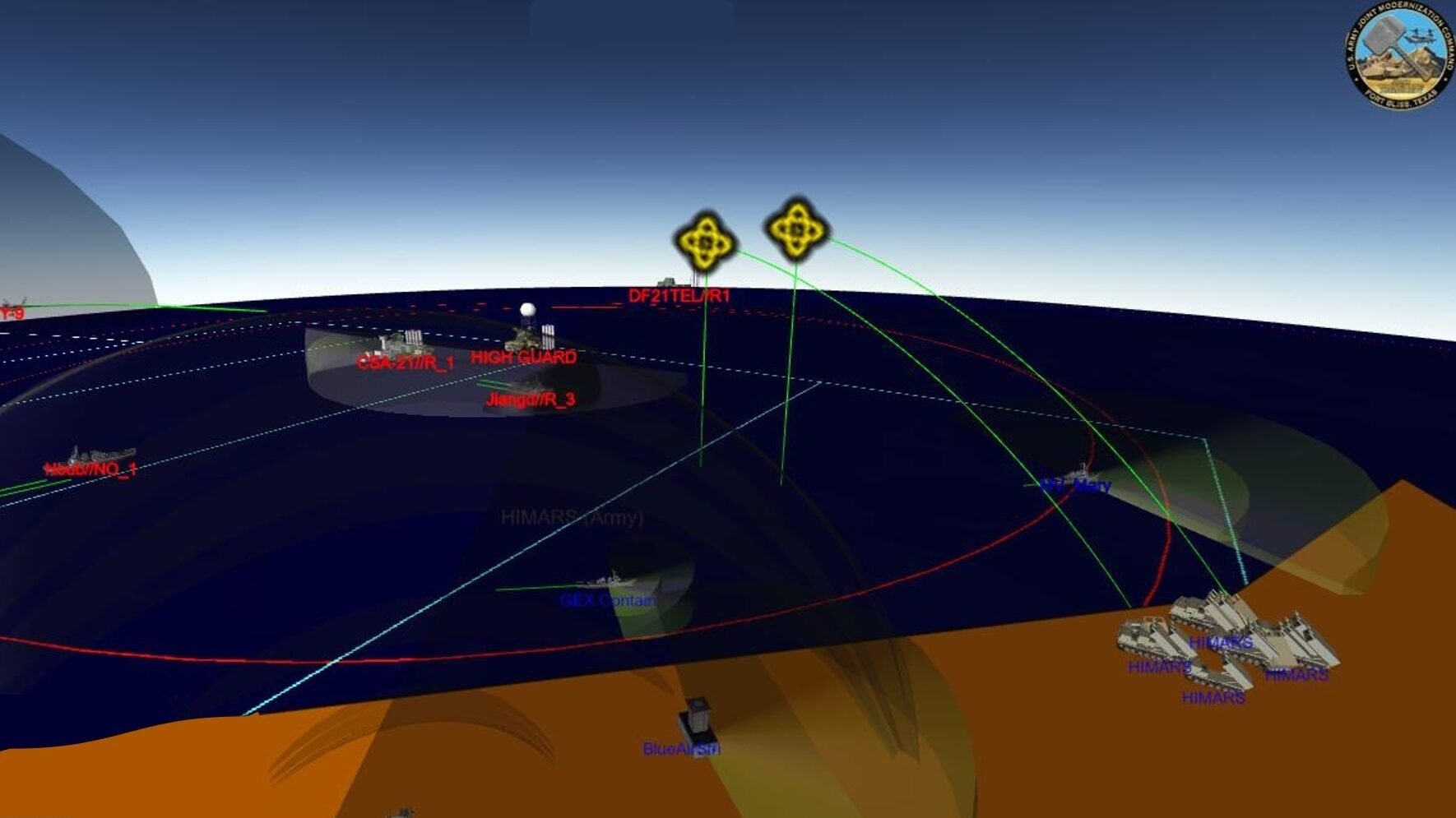
The Joint Staff’s Joint All-Domain Command and Control Campaign Plan Experiment 2 allowed Army, Navy, Air Force and Marines nodes to view a common operational picture during a simulation. (via DVIDS)
WASHINGTON — Despite wanting to spend upwards of $2 billion in fiscal 2023 on various Joint All Domain Command and Control (JADC2) initiatives and recently announcing a new office dedicated to synchronizing different efforts, the Pentagon and military services still haven’t been able to clearly say exactly what they’re trying to do with the effort, at least according to one service official’s blunt remarks today.
“Whether it’s JADC2 or [the Navy’s Project] Overmatch, we haven’t explained very well the challenges we’re trying to” overcome to industry, Vice. Adm. Jeffrey Trussler, deputy chief of naval operations for information warfare, told the Association of Old Crows conference.
“If you just listen to anything with respect to JADC2, we haven’t actually defined the problem we’re trying to solve yet,” he said.
Trussler added that, at least from what he’s seen, every solution presented from industry looks “exactly the same” — that it includes tech for aircraft, ships and weapons. And even if industry delivers exactly what was asked for, “we’re disappointed because it’s not what we wanted.
“So I don’t think we’re mature enough in the learning that we’re doing with our multiple exercises and [we have] yet to define the problem we want to solve,” Trussler said. “I think what we’re doing, we’re more or less chiseling out all the areas where we have an issue. I’m afraid if we put out a requirement right now that says we want a fusion engine, we give it some parameters, we might not solve the problems we really need to solve. Our challenge is… we’re not very good at requirements,” he continued.
Broadly speaking, the military has said JADC2 is the attempt to ingest data from a myriad of sources, make sense of it, and get it to warfighters or battlefield commanders as quickly as possible. But each service has its own separate piece of JADC2. The Army is currently underway with its annual Project Convergence experiments, while the Navy has its secretive Project Overmatch and the Air Force is working on its Advanced Battle Management System.
Navy officials have been relatively quiet about Overmatch. In February, Rear Adm. Doug Small, the senior officer in charge of the program, told Breaking Defense the service has been “very deliberate about keeping a low profile…for good reason.”
“Our competitors steal everything,” he said. “And frankly, they’re not ashamed of it.”
The Army has been more forthcoming with its own contribution to JADC2, called Project Convergence, which is characterized as a “campaign of learning” for the service, testing out different high-tech capabilities and their interoperability. The service has one more experiment lined up for this year’s campaign on Nov. 9 at Ft. Irwin, Calif. This year’s experiments for the first time included partners from Australia and the United Kingdom who have brought over their own command and control, unmanned aerial systems and sensing equipment, Army officials told reporters Oct. 20.
Depending on which service official you speak to, all of the services are either completely aligned and the reports saying otherwise are “cringe,” or there’s a lack of interoperability between the disparate efforts. That’s part of what the the new Acquisition Integration Interoperability Office in the Office of the Secretary of Defense wants to tackle.
Chris O’Donnell, deputy assistant secretary of defense for platform and weapon portfolio management in the Office of the Undersecretary of Defense for Acquisition and Sustainment, said Wednesday at the conference that the first task in the office will be to “take a look at how we are going to integrate – truly get JADC2 talking across the department.” Meanwhile, DoD’s Chief Digital and Artificial Intelligence Officer will be in charge of integrating all the data from JADC2.






















